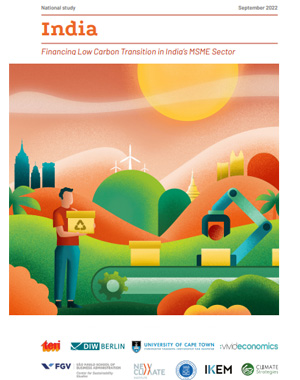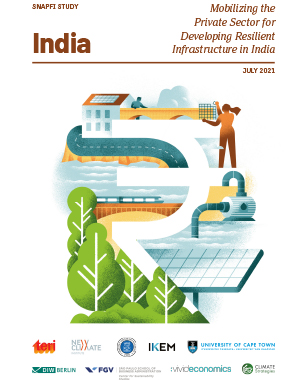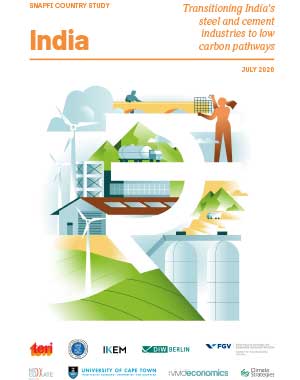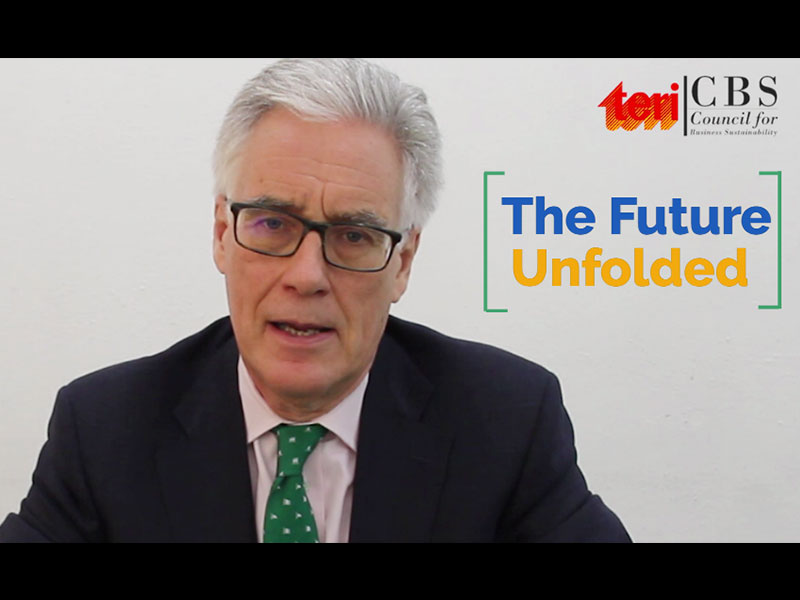Strengthen National Climate Policy Implementation: Comparative Empirical Learning & Creating Linkage to Climate Finance (SNAPFI)

International climate finance (ICF) is a vital means for supporting the implementation of nationally determined contributions (NDCs) of emerging and developing countries and facilitating the enhancement of climate ambitions. The overall aim of the project is to explore the implementation of NDCs in different geographies, and how this can be supported through ICF.
To understand the role that ICF can play in emerging economies, research organizations from five countries (Brazil, Germany/ EU, India, Indonesia, and South Africa) came together, under the four-year-long SNAPFI project. This provides all partners with cross-learning opportunities as well as a platform for knowledge sharing and collaborating.
The SNAPFI project, which started in July 2019, focuses on assessing and strengthening policy frameworks and financial instruments to support the just transition to low carbon pathways and resilience building. With a strong emphasis on engaging with relevant stakeholders, which include policy-makers, researchers, as well as implementers, the project also aims to enhance climate-friendly investments and build the required capacity at the national level.
In each year of the project, five national studies will be developed to look into specific issues that act as barriers to climate actions, occurring at the interface between the policies and finance. Besides the national studies, focused learnings through a case study approach will also be developed, in a collaborative manner by all partners.
TERI's role under the project
TERI is the India partner of the SNAPFI project and is responsible for engaging with policymakers in India to identify relevant research topics, as well as engaging with key stakeholders to develop insightful national studies.
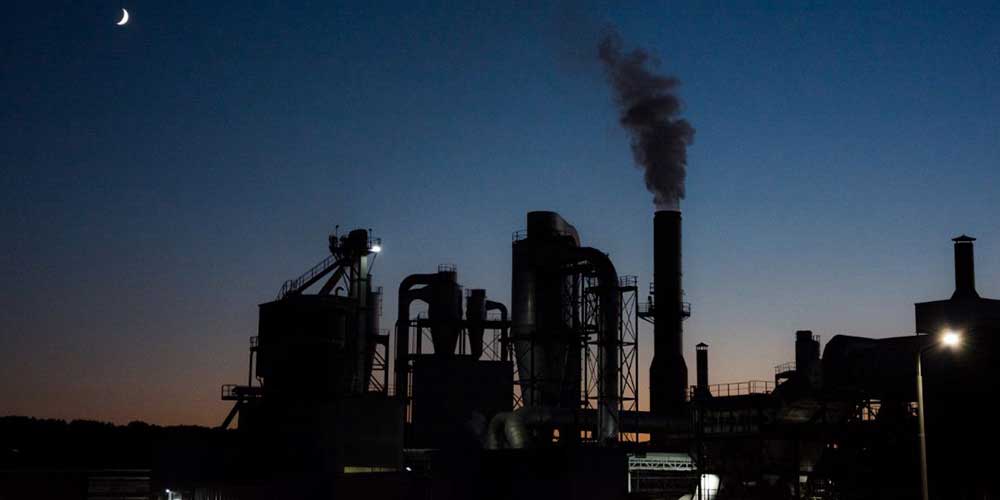
Publications
Financing Low Carbon Transition in India's MSME Sector
Authors: Shubhi Goel, Ashmita Biswas, Soham Banerjee, Shailly Kedia
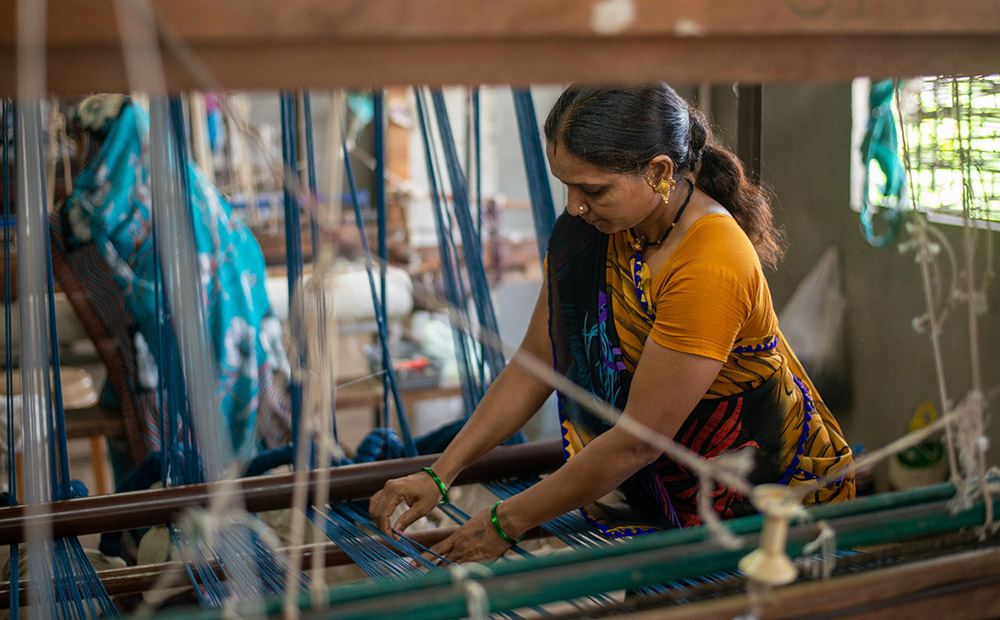
India’s MSME sector is a significant contributor to the economy. At the same time, the sector is notably GHG emission-intensive due to the high use of fuels and its informal nature which is difficult to regulate. The MSMEs consume about 25% of the total energy consumed by the industrial sector in India and out of the total energy consumed in MSMEs, 15% is electricity consumption and 85% is thermal energy consumption. As a significant contributor to the economy and emissions, India’s MSMEs needs to transition into a low-carbon emitting sector to support achieving the country’s NDCs and other global climate commitment.
This study uses qualitative research methods to explore the status of financial assistance toward MSME’s low carbon transition (LCT). This includes the existing institutional arrangements, cooperation mechanisms, and policy landscape for LCT in MSME. Through this review of the existing structure, the study identifies major barriers faced by the sector to access finance for MSMEs. The study uses case studies of Gujarat and Maharashtra to have a more micro-level understanding of the policies and instruments available to MSMEs at the state level. Additionally, the study illustrates state and center policy linkages by applying the theory of convergence and divergence as a policy analysis tool and analysing its implications and future scope. The study concludes with recommendations sourced from literature and stakeholder consultations to further strengthen the existing structure for aiding the MSME sector’s LCT.
Major financing challenges in India’s MSME sector:
- The demand for green finance in MSMEs is relatively niche and aggravated by a critical lack of awareness of existing financial mechanisms leading to hesitation among the stakeholders about transitioning.
- Limited handholding in terms of active technical assistance in order to adopt new technologies.
- The available financial provisions are not adequately supplemented by finance for R&D, demonstration, and standards.
- There is an acute data scarcity, particularly with respect to emissions data with no mandate or cap in place for emissions in MSMEs. The unorganized nature, scepticism about green alternatives, and the low level of awareness and capacity in MSMEs make it a difficult affair to implement regulatory and reporting frameworks and implement compliance-based targets.
- A still-evolving capital market and upfront high capital costs for green products have lent themselves to deprioritizing LCT within the supply chain and leading to an acute lack of private involvement and investment at the MSMEs level causing a notable supply gap.
- The ecosystem of institutional finance is not adequately aligned with the needs of the MSME. There is a need to better define the financial allocation from the institutions including the amount of finance leveraged and modalities of co-financing.
- A shortage of opportunities in terms of investments towards Low Carbon Transition Pathways has resulted from stressed balance sheets in the aftermath of COVID-19. This has led to muted demand for finance for innovation, a lack of ‘first-mover-advantage' for firms that undertake LCT measures, and capacity/resource constraints within financial institutions.
- The provisions that have been made to make finance available for the MSMEs to improve energy efficiency and promote the use of renewable energy do not take the complexities of being part of a larger supply chain.
- A more comprehensive assessment of financial needs has to be considered keeping in mind the transaction cost of technical assistance in addition to the cost of technology adoption.
Key recommendations:
- Promoting an incentive-based model
- Financial support from large companies
- Innovative financing models
- Intensify R&D, demonstrations, and pilot projects for new technologies
- Scaling up capacity building and awareness
- Adoption of an account aggregator framework
- Adopting a revolving finance mechanism
- Forming a digital ecosystem
- Mobilizing international climate finance
Mobilizing the private sector for developing resilient infrastructure in India
Authors: Tamiksha Singh, Ritu Ahuja, Saumya Malhotra
The study assesses the barriers for private sector financing of climate resilient infrastructure in India. It develops priority measures to enhance climate resilience of private sector infrastructure investment.
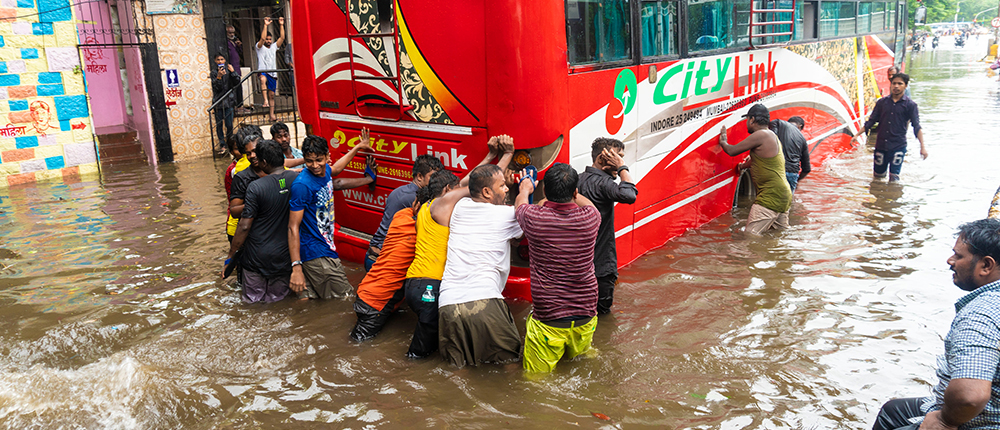
India is a highly climate vulnerable country, with increasing frequency and intensity of climate related natural disasters. According to the National Disaster Management Authority (NDMA), in India around 12% of total land area is exposed to floods, about 68% of land is vulnerable to droughts, landslides and avalanches, and 5,700 km of the 7,516-km long coastal line is highly vulnerable to frequent tsunamis and cyclones. This vulnerability to climate events and to slow onset climate change processes, like sea level rise and desertification, highlights the need to prioritize adaptation to irreversible climate impacts.
There is an urgent need to build resilience of the people, society, and economy, to mitigate the increasing cost of disasters and minimize the risk to human life. Over the last few years, assessing the damage caused by climate events has shown alarming results. According to a UN study, the Cyclone Amphan in 2020 caused damage, largely for infrastructure, of ~USD 14 billion in India, estimated to be the costliest cyclone in the region. The escalating economic cost of these disasters needs to be minimized by incorporating adaptation action and resilience building in the overall governance and development policy framework of the country.
This has been recognized under Article 7 of the Paris Agreement, which sets the global goal of enhancing adaptive capacity, strengthening resilience and reducing vulnerability to climate change. The Agreement's focuses also goes on to commit developed countries to support the efforts of developing country Parties, under Articles 9 (finance), 10 (technology) and 11 (capacity building).
The adaptation action spectrum looks at the response mechanisms to climate impacts and to the reduction of vulnerability and resilience building to climate stress. Reducing climate vulnerability and increasing climate resilience has especially become the need of the hour and is critical to increasing the efficacy of response and recovery to climate shocks.
This study aims to assess the role of the private sector in developing climate resilient infrastructure in India, focusing on the interface between the policy framework and finance for effective realization of this critical climate objective. This is directly relevant to achieving the goals of the Paris Agreement too where, according to Article 2.1c of the agreement, all Parties must develop the policy and investment frameworks to support the alignment of all domestic and international financial flows with a "low greenhouse gas (GHG) emissions and climate-resilient development" pathway.
Transitioning Steel and Cement Industries to Low-Carbon Pathways
Authors: Tamiksha Singh, Ritu Ahuja, Jalpa Mishra, Saumya Malhotra
The heavy industries segment can also be termed as hard-to-abate segment, owing to the nature of these industries. This is a segment which is capital intensive; manufacturers essential goods, like steel, cement and plastics; and is also amongst the highest emitters of CO2 – making a transition to green a major challenge. In this report we focus on understanding the barriers to finance that the segment faces, by assessing their operational and financial context and the ability of top Indian steel and cement sector companies to be able to finance a green transition on their own. The report also delves into the supporting policy and regulatory environment and the voluntary initiatives undertaken by the steel and cement industries to abate carbon emissions, highlighting some success stories.
Finally, the report identifies gaps where appropriate policy and other support measures can help the green transition of these sectors. To initiate an effective transition, the report specifically explores the role of international climate finance in greening India's heavy industries segment. It concludes with detailed recommendations building on stakeholder inputs on how India's steel and cement sectors can undergo a green transition.
Events
On October 12, 2020, TERI organised a virtual discussion on understanding the barriers to accessing green finance from the Indian steel industry perspective, and exploring how these differ from the challenges faced by the industries in developed economies.
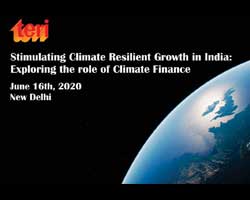
On June 16, 2020, TERI conducted a webinar on "Stimulating Climate Resilient Growth in India: Exploring the Role of Climate Finance" to discuss needs and challenges regarding finance for a green transition. The virtual discussion also deliberated on measures for preparing for future carbon markets and also identify areas where climate finance mechanisms can support domestic policies and play a role to stimulate economic recovery.
Presentation Agenda Summary
On January 29, 2020, TERI held a thematic track on "Finance Mechanisms for Accelerating Industry Decarbonisation" at the World Sustainable Development Summit (WSDS) 2020.
List of Partners/ Sponsors
Funded by: International Climate Initiative (IKI), Federal Ministry for the Environment, Nature Conservation and Nuclear Safety (BMU)
In cooperation with:
Lead Partner:
- The German Institute for Economic Research (DIW Berlin) (Germany)
Country Partners:
- Center for Sustainability Studies of Fundação Getulio Vargas (Brazil)
- Climate Change Center, Institute of Technology Bandung (Indonesia)
- The Energy and Resources Institute (India)
- University of Cape Town (South Africa)
Support Partners:
- Vivid Economics (UK)
- New Climate Institute (Germany)
- Climate Strategies (UK)
- Institute for Climate Protection Energy and Mobility (Germany)

